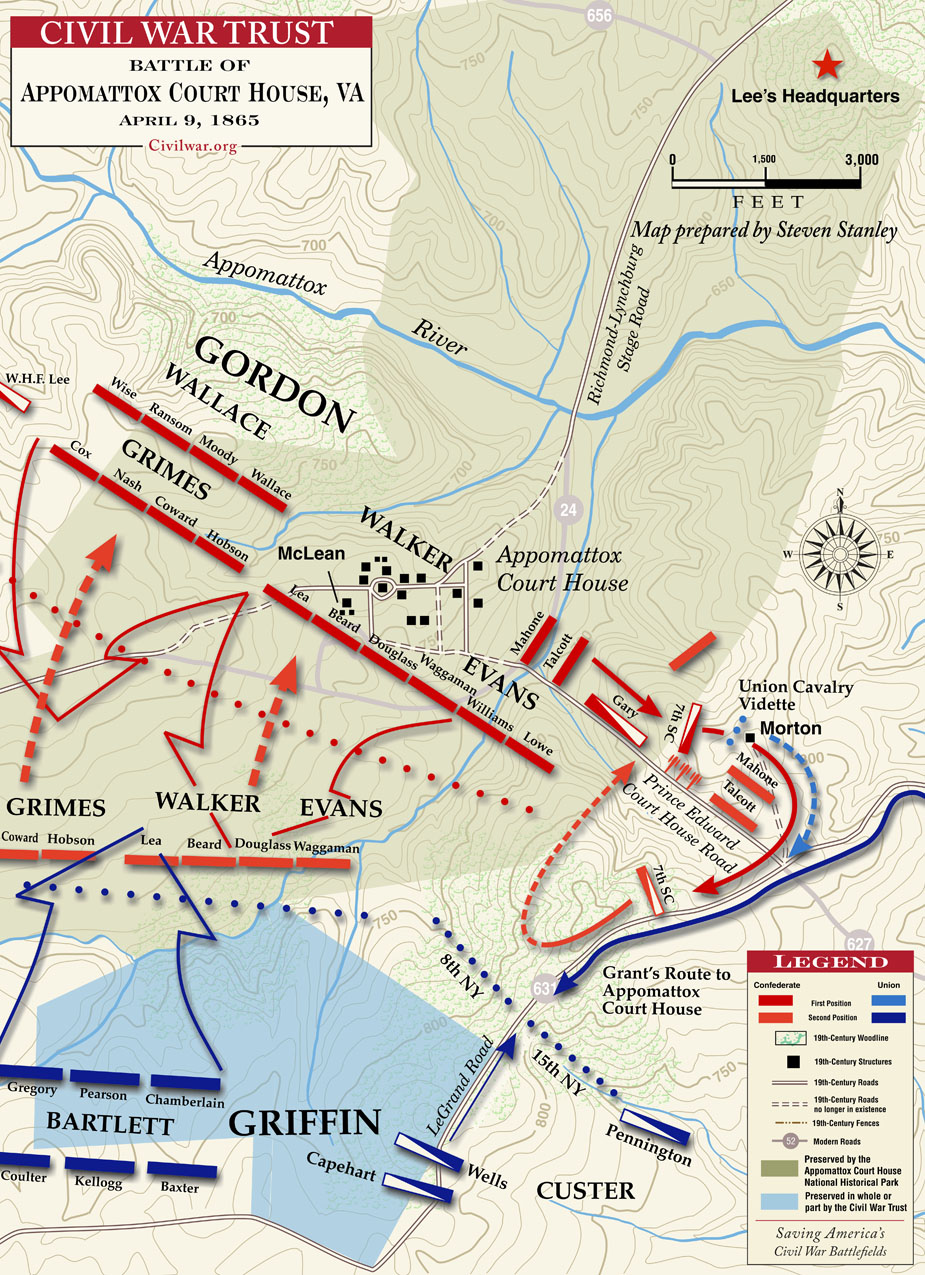Table Of Content
Lee’s infantry, however, was engaged with Grant’s Army of the James, which had approached the Confederates from the west under cover of night. Faced with no route of escape to Lynchburg, Lee agreed to negotiate terms of surrender. Atthe time of evacuation, many of the evacuees disposed of their properties,especially their household goods, in quick sales that frequently involvedheavy financial losses. The majority, however, placed their household furnishingsin storage and retained their interest in other holdings even after theywere personally transferred to relocation centers. The Union army, led by General Ulysses S. Grant, had relentlessly pursued the Confederate troops—this time, there would be no possible escape.
Commemoration of the 159th Anniversary of Surrender and Freedom Day- April 8-14, 2024 - Appomattox Court House ... - National Park Service
Commemoration of the 159th Anniversary of Surrender and Freedom Day- April 8-14, 2024 - Appomattox Court House ....
Posted: Wed, 28 Feb 2024 08:00:00 GMT [source]
Battle of Sailor’s Creek
As all centers, in view of the crowded andabnormal living conditions, special sanitary precautions are necessaryto safeguard the community health and prevent the outbreak of epidemics. Thephysical standards of life in the relocation centers have never been muchabove the bare subsistence level. For some few of the evacuees, these standardsperhaps represent a slight improvement over those enjoyed before evacuation.But for the great majority of the evacuated people, the environment ofthe centers–despite all efforts to make them livable–remains subnormaland probably always will be. In spite of the leave privileges, the movementof evacuees while they reside at the centers is necessarily somewhat restrictedand a certain feeling of isolation and confinement is almost inevitable. Inthe interest of both accuracy and fairness, it is important to distinguishsharply between the residents of relocation centers and the militaristsof Imperial Japan. Two-thirds of the people in the centers are Americancitizens, born in this country and educated, for the most part, in Americanpublic schools.
Los Angeles: The Civil War’s Forgotten Front
As the 5th Corps advanced, Custer and Brigadier General Thomas Devin’s divisions moved behind it—east on the LeGrand Road—putting additional pressure on the Confederate left flank as the Confederate infantry withdrew through the village. After a white flag had appeared on Custer’s front, General Martin Gary’s cavalry brigade disavowed the truce and attacks Custer’s advance, but the attack was quickly beaten back, suffering losses. Gordon formed his lines at the western edge of the village with the divisions of General Clement Evans on the left, General James Walker in the center, General Bryan Grimes on the right and General William Wallace’s division was in a second line.
Confederate
Characteristically, Grant had arrived in his mud-splattered field uniform while Lee had turned out in full dress attire, complete with sash and sword. The men agreed and the California 100, the nickname given to the 100 Californian cavalrymen, traveled to Massachusetts to join the 2nd Massachusetts Cavalry. The California 100 was later joined by 3 more companies of Californians and formed what would be known as the California Battalion. The California Battalion spent the first year of their service in continual conflict with John Mosby’s guerilla battalion. In 1864, the California Battalion joined Phil Sheridan’s Army of the Shenandoah and was active throughout the Shenandoah Valley campaign; taking part in the largest cavalry charge of the Civil War at the Third Battle of Winchester and taking part of the Union counter attack at the Battle of Cedar Creek.
Appomattox Court House NHP to host Homeschool Day

Afterward, they met at the home of Wilmer McLean where Lee agreed to surrender the Army of Northern Virginia. On April 6, Lee was marching the Army of Northern Virginia west toward Farmville where supplies awaited. Lee’s 1st and 3rd Corps, commanded by Major General James Longstreet, led the march. Major General Richard Anderson, commanding the army’s 4th Corps, followed Longstreet. Two more divisions, led by Major General Custis Lee and Major General Joseph B. Kershaw, under the command of Lieutenant General Richard S. Ewell, trailed Anderson. The Confederate 2nd Corps, comprising three cavalry divisions commanded by Major General John B. Gordon, served as Lee’s rearguard.
“There is nothing left for me to do but to go and see General Grant,” he told his staff that morning, “and I would rather die a thousand deaths.” Messengers, racing between the lines, carried communiques between the two camps, to halt the fighting and arrange a meeting. Generals Grant and Lee agreed to convene at the home of Wilmer McLean at Appomattox Court House to stop the fighting between their two armies. Rooney Lee’s men stayed with the infantry wheel while Rosser and Munford pressed forward (west) hoping to get on the Federal flank and gain the Stage Road in their rear. Meanwhile, General George Crook directed General Ranald McKenzie’s small division of cavalry from the Army of the James, and a brigade under Colonel Samuel B. Young, to move up to support Smith on the left.
Appomattox County, VA Apr 9, 1865
No such provisions were made for Lee’s army, and “the countryside became infested with gangs of pillaging veterans” (8). Two weeks later, everyone felt a great sense of relief at reports that John Wilkes Booth had been captured and killed…. On that same day, April 26, Confederate Gen. Joseph Johnston surrendered his Army of the Tennessee – the largest Confederate force still in existence – to Gen. William Tecumseh Sherman in Durham Station, North Carolina. Johnston also surrendered other forces under his command in North Carolina, South Carolina, Georgia, and Florida – altogether surrendering more than 89,000 soldiers. Including the reconstructed court house, there are about 10 buildings (extant or reconstructed) that were in the village at the time of the surrender and are an integral part of the park.
The meals areplanned at an average cost of not more than 45 cents per person per day(the actual cost, as this is written, has averaged almost 48 cents), areprepared by evacuee cooks, and are served generally cafeteria style inmess halls that accommodate between 250 and 300 persons. At all centers,Government-owned or Government-leased farmlands are being operated by evacueeagricultural crews to produce a considerable share of the vegetables neededin the mess halls. At nearly all centers, the farm program also includesthe production of poultry, eggs, and pork; and at a few the evacuees areraising beef and dairy products. Every evacuee is subject to the same foodrationing restrictions as all other residents of the United States. Housingis provided for the evacuee residents of the centers in tarpaper-coveredbarracks of simple frame construction without plumbing or cooking facilitiesof any kind.
Opportunities foreconomic gain in the ordinary sense are almost completely lacking to theresidents of the centers. On the morning of April 9, Lee ordered his cavalry, under the command of Gen. John B. Gordon, to attack Sheridan’s cavalry, which had blocked the Richmond-Lynchburg Stage Road. Lee commanded an army of nearly 27,000 soldiers, which paled in comparison to Grant’s force of some 63,000 troops, but he still intended to force his way through Union lines. The Confederate cavalry initially held their own and even succeeded in driving the Union horsemen from their position atop a nearby ridge. However, Gordon saw thousands of Union troops quickly approaching and sent word to Lee that his position was hopeless unless the infantry supported them.

At someof the centers, athletic contests are arranged periodically with teamsfrom nearby towns. Religionis practiced at relocation centers with the same freedom that prevailsthroughout the United States. No church buildings have been provided by the Governmentbut ordinary barracks are used for services by Protestants, Catholics,and Buddhists alike. Ministers and priests from the evacuee populationare free to carry on their religious activities at the centers and mayalso hold other jobs in connection with the center administration.
Although there are a number of extant buildings within the park, such as Clover Hill Tavern, Meeks Store, and Woodson Law Office, the McLean House was dismantled in 1893 by speculators who concocted a money-making scheme. The speculators planned to reassemble the house in the nation’s capital as a war museum but nothing came of the scheme. Subsequently, the National Park Service rebuilt the house on its original foundation in the 1940s. Appomattox Court House is situated in central Virginia about 90 miles west of Richmond and 18 miles east of Lynchburg. When approaching the town of Appomattox, take State Route 24 north to the National Park Service-administered site. When Lee asked for conditions, Grant said that the Confederates would be paroled but must pledge not to take up arms again against the U.S. government.
At each center, the exterior boundariesare guarded by a company of military police who may be called into thecenter in cases of emergency. The Federal Bureau of Investigation is alsocalled in from time to time as the need arises. The Battle of Appomattox Station commenced shortly after 4 pm and lasted until dusk with varying intensity, although more fighting continued in the direction of Appomattox Court House until probably 9 pm.
The war would not be officially declared won for the Union until August 20, 1866. As he was a man of much dignity, with an impassable face, it was impossible to say whether he felt inwardly glad that the end had finally come, or felt sad over the result, and was too manly to show it. Whatever his feelings, they were entirely concealed from my observation; but my own feelings, which had been quite jubilant on the receipt of his letter, were sad and depressed.
The village is the site of the Battle of Appomattox Court House, and contains the McLean House, where the surrender of the Army of Northern Virginia under Robert E. Lee to Union commander Ulysses S. Grant took place on April 9, 1865, an event widely symbolic of the end of the American Civil War. The village itself began as the community of Clover Hill, which was made the county seat of Appomattox County in the 1840s. The village of Appomattox Court House entered a stage of decline after it was bypassed by a railroad in 1854. In 1930, the United States War Department was authorized to erect a monument at the site, and in 1933 the War Department's holdings there was transferred to the National Park Service. The site was greatly enlarged in 1935, and a restoration of the McLean House was planned but was delayed by World War II. Several restored buildings (including the McLean House and the courthouse), as well as a number of original 19th-century structures are situated at the site.
On April 8, Major General George Custer’s cavalry seized a Confederate supply train and 25 guns at Appomattox Station, denying the Confederate army much-needed provisions. Later in the day, Custer also overran Lee’s lead artillery unit and secured the high ground west of Appomattox Court House, directly in Lee’s line of retreat. Lee’s plan was to march his beleaguered army west to Amelia Court House where he expected to find much-needed provisions. From there he intended to move south and join forces with Major General Joseph E. Johnston’s Army of North Carolina. As the Confederates moved west Sheridan’s cavalry began hounding them almost immediately. Three minor engagements took place during the next three days at Sutherland’s Station, Namozine Church, and Amelia Springs.

No comments:
Post a Comment